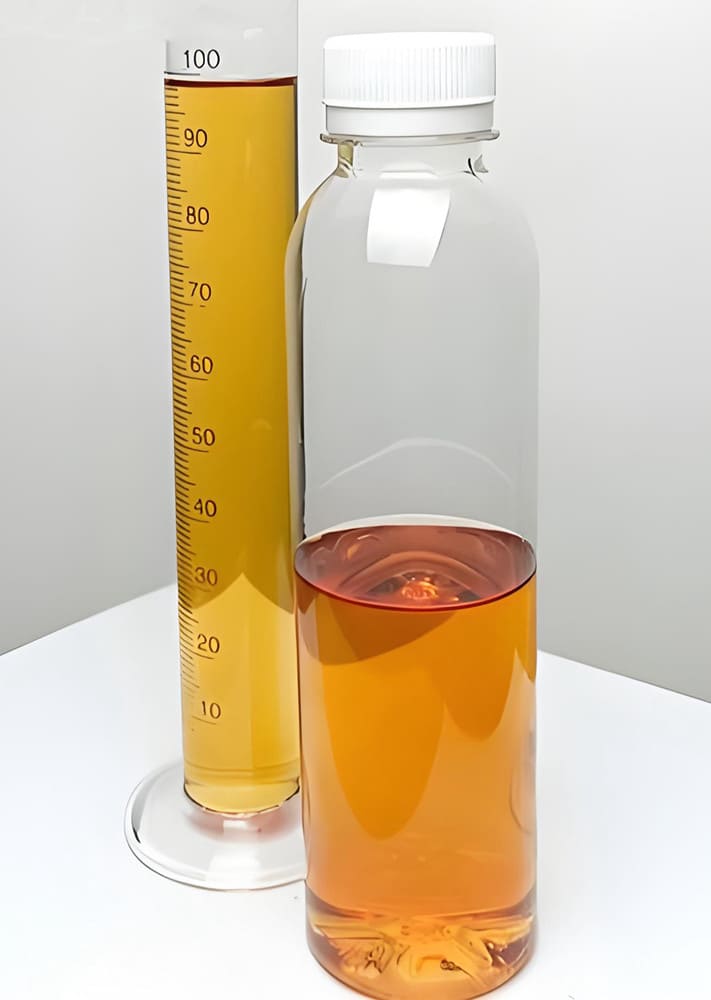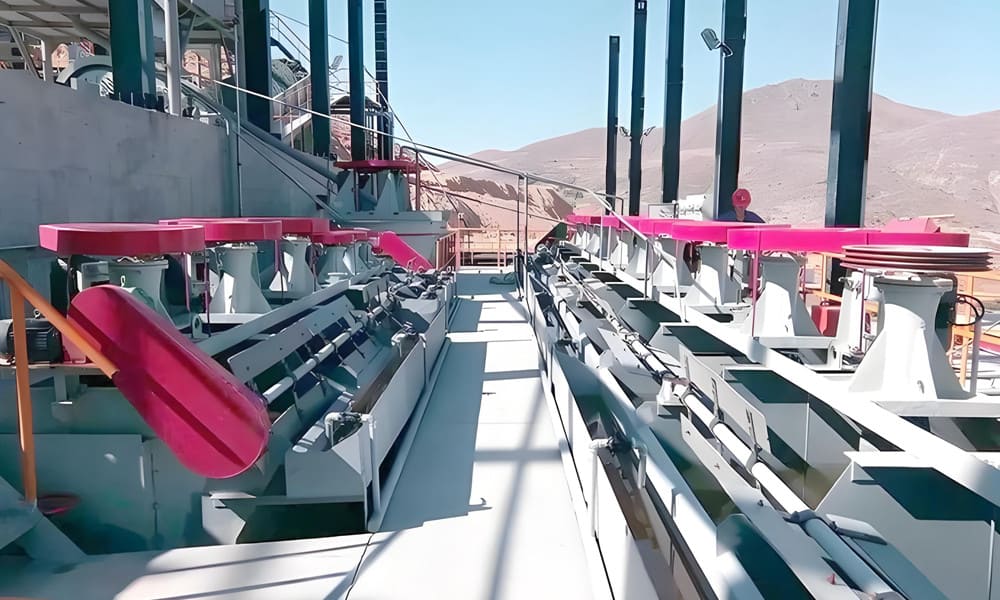Have you ever encountered this situation: You carefully select flotation oil and strictly follow the process, yet the final concentrate grade falls short of expectations? This not only wastes resources but also impacts production efficiency. Today, we’ll uncover the underlying reasons.
Substandard concentrate grades after using flotation oil are typically linked to reagent selection, dosage control, process parameters, and ore properties. Key factors include mismatched flotation oil types, improper dosage, insufficient agitation intensity, pH deviations in the pulp, and the impact of harmful impurities in the ore. Accurately diagnosing these issues is the first step toward improving concentrate grade.
Understanding the root cause is the beginning of solving the problem. Next, we’ll delve into each critical aspect to help you pinpoint the true reasons behind subpar concentrate grades.
What is Flotation Oil?
Float oils, also referred to as frothing reagents or flotation auxiliaries, are essential chemical additives used in mineral separation processes through froth flotation. They serve as supplementary collectors, reinforcing the hydrophobic coating on target mineral particles and modulating multiple factors within the flotation system. Major classifications include petroleum-based oils, plant-derived oils, and synthetic hydrocarbon variants, each selectively improving mineral recovery efficiency.
The Role and Necessity of Flotation Oils
Floation oils play a vital role in mineral separation processes by serving dual functions:
As Collectors —— These oils chemically coat target mineral particles, increasing their water-repellent (hydrophobic) properties. This enables the minerals to attach more easily to air bubbles during flotation. For example, fuels like diesel (#2 oil) are commonly used to enhance coal particle hydrophobicity, significantly improving recovery rates.
As Frothers —— Certain flotation oils help generate and stabilize foam, creating a durable mixture of air bubbles, water, and minerals that facilitates separation. Pine oil, a classic frothing agent, is widely applied precisely for this purpose.

Key Reasons for Adding Flotation Oils
- Modify mineral surface properties to promote selective attachment to the bubble.
- Enhance bubble-mineral adhesion for efficient separation.
- Stabilize the froth layer to sustain mineral-laden bubbles.
- Improve separation precision by making target minerals floatable while suppressing unwanted materials.
By optimizing these interfacial interactions, flotation oils significantly boost both recovery rates and concentrate quality in mineral processing operations. Their strategic application remains fundamental to achieving efficient, large-scale mineral beneficiation.
Reasons & Solutions for The Concentrate Grade Failing to Meet Standards After Using Flotation Oil
Faced with the challenge of substandard concentrate grades after using flotation oil, many processing plants find themselves at a loss. In reality, systematically investigating potential causes can lead to solutions.
The primary reasons for substandard concentrate grades after using flotation oil include: improper selection of flotation oil type, inaccurate dosage control, mismatched process parameters, changes in ore properties, and poor equipment condition. Improvement measures should focus on optimizing chemical regimens, adjusting process flows, refining operational parameters, and implementing ore pre-selection treatments.
Reason 1: Flotation Oil Issues with Flotation Oil Itself
Causes
- Inappropriate Selection
Different ore properties require specific flotation oils. For example, in sulfide ore flotation, using oils primarily suited for oxide ores makes it difficult to effectively collect target minerals, resulting in substandard concentrate grades. - Quality Issues
Insufficient purity of flotation oil, containing impurities or inadequate active ingredient content, compromises its collection performance and selectivity. For instance, contamination during production, storage, or transportation, or imperfect manufacturing processes, can result in unstable product quality.
Improvement Measures
Re-evaluate ore properties and select suitable flotation oil based on the ore’s type, composition, structure, and other characteristics. Conduct quality testing on existing flotation oil, such as measuring active ingredient content and impurity levels. If quality issues are confirmed, replace the oil with one that meets quality standards.
Reason 2: Mineral Properties
Causes
- Complex Mineral Composition
The ore contains multiple minerals with intricate interrelationships, complicating flotation separation. For instance, in lead-zinc ores, lead and zinc minerals are closely associated, making effective separation via flotation difficult and consequently affecting concentrate grade. - Uneven particle size distribution
The particle size of ore significantly impacts flotation efficiency. If ore particles are too coarse, the contact area between target minerals and flotation oil is reduced, limiting the oil’s effectiveness. Conversely, wonderful particles tend to agglomerate, similarly hindering flotation.
Improvement Measures
For complex ores, conduct more in-depth mineralogical studies and develop refined flotation processes, such as staged grinding and stepwise flotation, to enhance recovery rates. Determine the appropriate grinding fineness through testing to achieve good liberation of target minerals while avoiding over-grinding or under-grinding.
Reason 3: Issues with Flotation Process Parameters
Causes
- Unreasonable Chemical Regimen
Beyond flotation oil, the dosage and addition sequence of other reagents, such as pH adjusters and frothers, also impact flotation efficiency. For instance, insufficient pH adjuster dosage fails to effectively regulate pulp pH and mineral surface properties, impairing the flotation oil collection of target minerals. Excessive or insufficient frother dosage leads to unstable foam layers or inadequate foam volume, hindering concentrate enrichment. - Insufficient flotation time
Flotation duration is critical for ensuring target minerals fully interact with the flotation oil and float to the surface. If the flotation time is too short, some target minerals may be carried away with the pulp stream before they can bind with the flotation oil and attach to bubbles, resulting in substandard concentrate grades. - Inappropriate Slurry Concentration
Excessively high slurry concentration increases viscosity and bubble movement resistance, impairing mineral adhesion. Conversely, excessively low concentration reduces mineral particle density per unit volume, diminishing flotation efficiency—both scenarios may yield suboptimal concentrate grades.
Improvement Measures
Optimize the reagent system through testing to determine the optimal dosage and addition sequence for each reagent. Appropriately extend the flotation time, identifying the optimal duration through small-scale trials and on-site adjustments. Adjust the pulp concentration to an appropriate range based on ore properties and flotation equipment characteristics.

Reason 4: Flotation Equipment Issues
Causes
- Equipment Wear
Severe wear on components such as the impeller and stator of the flotation machine can lead to insufficient agitation intensity and aeration volume. This impairs the mixing of flotation oil with minerals, as well as bubble generation and distribution, preventing target minerals from effectively floating. - Equipment Malfunctions
Failures in flotation equipment systems—such as the aeration system or froth scraper—can impair concentrate quality and grade. Issues include uneven aeration, delayed froth removal, or excessive froth scraping.
Improvement Measures
Conduct regular inspections of flotation equipment wear and promptly replace worn components. Perform comprehensive checks and maintenance on flotation equipment, repairing or replacing faulty parts to ensure normal operation.
Conclusion
The use of flotation oil directly impacts concentrate grade, requiring comprehensive consideration of factors such as reagent selection, dosage control, process parameters, and ore characteristics. By systematically analyzing root causes and implementing targeted improvement measures, concentrate quality can be significantly enhanced. The key lies in understanding the mechanism of flotation oil and flexibly adjusting its application based on actual conditions. Accurate diagnosis and scientific improvement methods can effectively resolve issues of substandard concentrate grade.
